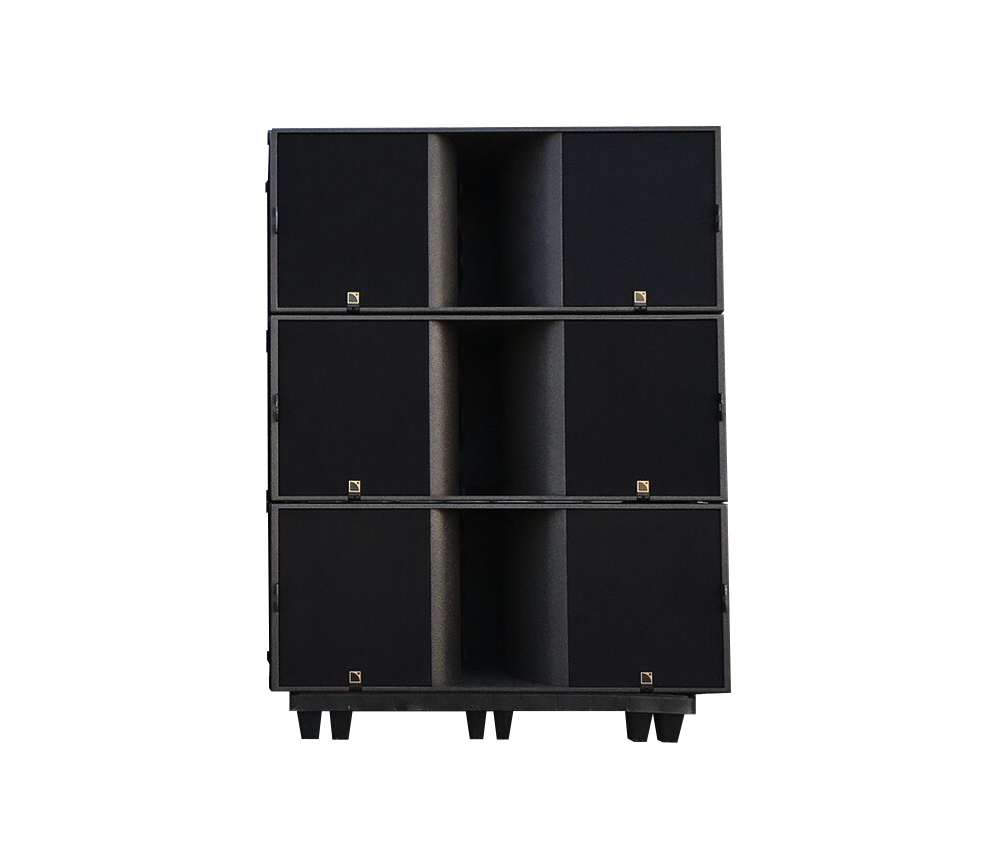Step-by-Step Guide to AV Installation
Jan 08, 2025Audio-visual (AV) systems have become an essential part of modern life, appearing in various forms. But have you truly understood what the AV industry offers, how much it costs, and how it works?
Don’t worry—this blog by AV Vietnam is here to provide you with all the information you need about AV installation. Let’s explore what an audio-visual installation is a collection of equipment scientifically installed to deliver top-notch audio and visual experiences for meetings, conferences, lectures, and more.
What Is AV Installation?
An AV installation, short for audio-visual installation, is the systematic process of designing, integrating, and configuring audio and visual equipment within a space. This process creates a unified system that seamlessly manages various media inputs and outputs. Whether for meetings, conferences, lectures, or events, a well-executed AV installation ensures a smooth and immersive audio-visual experience.

AV installation is the process of designing, integrating and configuring audio and visual equipment in a space systematically.
Key Components of AV Installation
Now that we’ve understood what AV installations are, let’s take a closer look at the main components of audio-visual installations. No matter the industry, AV installation plays a crucial role in ensuring smooth communication and functionality. As more companies embrace remote work, the need for seamless communication has grown. The AV industry has been instrumental in making this transition easier. To ensure a smooth and effective experience, several key components are essential for maintaining the flow of information and communication.
Conferencing Technology
Conferencing technology is something most organizations have adopted, whether for live or virtual meetings. AV installations streamline the conferencing experience, aiming to provide users with real-time, personalized interactions from anywhere in the world. Adapting AV to conferencing involves using various technologies such as cameras, projectors, microphones, and video walls, all designed to provide an experience that feels as real and interactive as possible.
Video Walls
A video wall is a combination of multiple screens arranged together to form a single large display. This technology is widely used by AV companies for various purposes, including surveillance, live events like music concerts, educational settings, and business meetings. Video walls come in various sizes, from 4×4 to 144×72, offering flexibility for different applications. Their versatility makes them an essential component for larger-scale events and presentations.
>> Discover more: A Guide to Audio/Visual Step Up for a Successful Music Festival
Interactive Whiteboards
Interactive whiteboards are essential tools for many industries, particularly in business and education. These boards offer numerous benefits, such as making learning easier for students and enhancing interactivity during virtual meetings.
Designed with touch-sensitive screens, interactive whiteboards work well with projected images, making them ideal for simplifying complex discussions and presentations. This component plays a major role in improving communication and engagement in various settings.
Step-by-Step Guide to Setting Up an AV System
Bringing an AV vision to life requires careful coordination across multiple stages, from site evaluation to final commissioning. Below are the key steps to ensure a successful AV installation process.
Find a Reliable AV Installation Service Provider
The journey begins with selecting a trusted AV installation service provider. A reliable partner will have expertise in site analysis, system design, equipment installation, and commissioning. Choose a provider with proven experience, positive client reviews, and a strong portfolio to ensure smooth execution.

AV Vietnam - Professional sound and lighting system installation unit
Conduct Site Surveys
The first step in the process is conducting a detailed site survey. This involves thoroughly analyzing the environment and identifying specific requirements for the AV system. Factors such as structural elements, power accessibility, lighting conditions, and ambient noise must be assessed.
For example, wall surface materials can impact sound quality, with bare concrete surfaces requiring sound-dampening panels. Surveyors ensure sufficient electrical capacity, map cable routes, and identify potential issues like noisy HVAC systems or projector placement conflicts. Careful site analysis prevents future problems and lays the foundation for an optimized AV design.
Design the AV System
Once the site survey is complete, the next step is designing the AV system. This involves selecting the right equipment and creating detailed schematics that align with the space’s intended purpose.
Key design considerations include:
-
Selecting loudspeaker models and mounting locations for flawless audio coverage.
-
Specifying acoustic treatments like dead boxes and sound reflectors for optimized listening conditions.
-
Programming control systems for seamless user interaction through touchscreens and button panels.
-
Balancing aesthetics, budget constraints, and future expandability to ensure long-term usability.
Approving the design before installation minimizes delays and ensures the system meets all expectations.
Install the Equipment
The installation phase brings the AV system to life by implementing the approved design. Professional AV riggers, specializing in audio-visual systems installation, mount equipment, route cabling, and connect components with precision to ensure both functionality and aesthetics.
Examples of installation practices include:
-
Anchoring speakers to structural beams using custom brackets or suspension wires.
-
Running audio and video cables neatly through conduits, drop ceilings, or floor trenches to keep them hidden.
-
Mounting displays with articulating arms for adjustable tilt and swivel functionality.
-
Securing rack equipment to welded rails for easy maintenance while ensuring durability.
-
Labeling and color-coding cables for streamlined debugging and future upgrades.
This systematic approach ensures that the system is visually appealing, functional, and easy to maintain.

Image of AV Vietnam staff adjusting the sound and lighting system
Test and Commission the System
The final step is testing and commissioning the AV system to ensure optimal performance and ease of use. This involves balancing and tuning the equipment, such as equalizing loudspeakers, setting default volumes, and calibrating video displays for accurate color representation.
During commissioning, technicians verify the functionality of all components, including microphone sensitivity, loudspeaker coverage, video fidelity, and seamless source switching. Automatic features like feedback suppression and preset recall are enabled to enhance usability.
Clients also receive hands-on training to confidently operate the system, ensuring they can maximize its potential. Most professional service providers include post-installation support to address any issues and maintain system performance over time. With methodical planning, precise installation, and careful commissioning, venues benefit from state-of-the-art audio-visual installations that elevate communication and production capabilities.
AV Applications and Setup Considerations
Audio-visual (AV) systems are essential tools for enhancing communication, engagement, and experiences across diverse industries. Each venue type has unique requirements, and tailored AV solutions ensure optimal performance and long-term reliability. Here’s an in-depth look at how AV setups are applied in various settings and the specific considerations for each.
Educational Facilities
In schools and universities, AV technology transforms traditional learning environments into dynamic, interactive spaces. Classrooms and lecture halls are equipped with interactive whiteboards, projectors, and video conferencing tools to foster collaborative learning. These systems facilitate multimedia presentations, remote teaching, and on-demand access to recorded lectures.
With AV installations tailored to educational needs, institutions can enhance student engagement and accessibility. For example, strategically mounted projectors ensure clear visibility for all students, while wireless content-sharing capabilities enable seamless integration of laptops, tablets, and other devices.
Key Considerations:
-
Scalability: Systems should support future upgrades to keep pace with technological advancements.
-
Ease of Use: Intuitive interfaces allow educators to focus on teaching rather than troubleshooting equipment.
-
Accessibility: AV solutions must cater to diverse learning styles and needs, ensuring inclusivity.
Museums
Museums leverage AV technology to create immersive, interactive experiences for visitors. From projection mapping and touchscreens to spatial audio, audio-visual installations enrich exhibits by bringing history, art, and science to life. AV systems also enable dynamic presentations in auditoriums, blending education and entertainment.
Durability is a key consideration for museum AV installations, as equipment must withstand heavy visitor traffic and environmental challenges. Outdoor displays and speakers, for instance, are weather-resistant, while indoor systems are designed to be tamper-proof.
Key Considerations:
-
Flexibility: AV systems should allow for quick updates to exhibit content.
-
Immersion: High-resolution visuals and directional sound enhance storytelling and visitor engagement.
-
Reliability: Rugged equipment ensures consistent performance in high-traffic environments.
Theatres
Theaters require sophisticated audio-visual setups and AV systems to deliver captivating performances. Sound reinforcement ensures crystal-clear audio, while dynamic lighting systems create dramatic effects. High-definition projectors and video walls provide additional visual elements, enhancing storytelling and audience immersion.
AV setups in theatres are designed for flexibility, accommodating various performances. Modular equipment allows for quick reconfiguration, while advanced control systems streamline transitions between lighting and sound cues.

Ensuring flexibility with AV Vietnam's audiovisual systems
Key Considerations:
-
Precision: AV systems must provide consistent, high-quality output across different performances.
-
Scalability: Theatres should be equipped to handle increasingly complex productions.
-
User-Friendly Design: Systems should facilitate efficient operation by technical crews and performers.
Hospitality
Hotels, resorts, and conference centers depend on AV technology and AV system installation to deliver seamless guest experiences. Digital signage, background music, and in-room entertainment systems create a welcoming atmosphere, while integrated AV solutions enable flawless events in ballrooms and meeting spaces.
Hospitality AV installations support advanced features like video conferencing, wayfinding, and automated room controls. These systems are designed to be intuitive, allowing non-technical users to operate them effortlessly.
Key Considerations:
-
Branding: AV solutions should align with the venue’s aesthetic and enhance its overall image.
-
Reliability: Systems must perform consistently to avoid disruptions during events.
-
Centralized Management: Dashboards allow administrators to monitor and control AV equipment across multiple locations.
Live Event Venues
Live event venues like stadiums and arenas demand high-performance AV systems to deliver unforgettable experiences. These setups include advanced sound systems, theatrical lighting, and large-format displays, ensuring every attendee can see and hear the action.
In addition to supporting live performances, audio-visual systems installation in event venues facilitates live streaming, broadcast production, and backstage communication. Portability and durability are essential, as equipment must handle frequent setups and breakdowns.

Ensure flexibility for live performances with AV Vietnam's sound and lighting systems
Key Considerations:
-
Flexibility: Systems must accommodate a wide variety of events, from concerts to sports games.
-
Scalability: Venues should be equipped to handle large crowds and high-demand productions.
-
Connectivity: Comprehensive networking ensures seamless integration of AV components.
By tailoring AV installations to the specific needs of each industry, venues can enhance functionality, improve user experiences, and future-proof their operations for years to come.
Conclusion
Completing an AV system installation requires thorough planning, expert design, and precise execution. From conducting detailed site surveys to commissioning the system, each step plays a crucial role in creating an efficient and user-friendly AV setup. Whether it’s for houses of worship, educational facilities, museums, theaters, hospitality venues, or live event spaces, a tailored AV solution ensures seamless performance and maximizes the value of your investment.
For professional AV installation services in Vietnam, AV Vietnam is your trusted partner. With extensive expertise in designing and implementing customized AV systems, we deliver innovative solutions tailored to your unique requirements. Contact us today at (+84) 939 311 911 or (+84) 918 640 988 to bring your vision to life!






